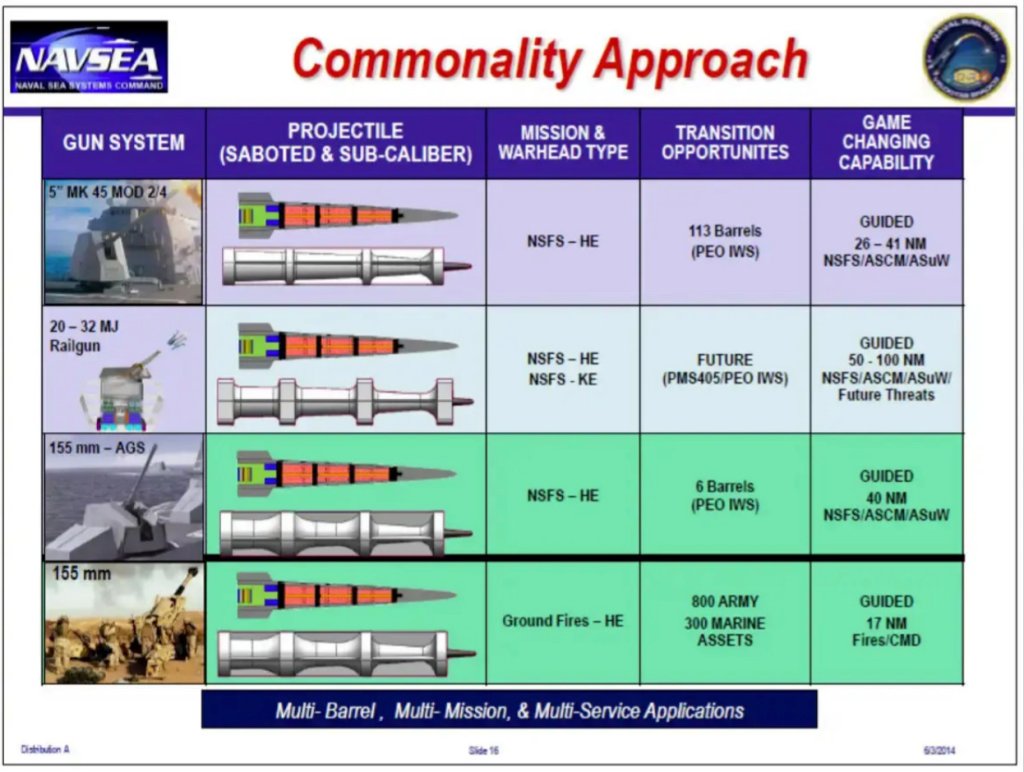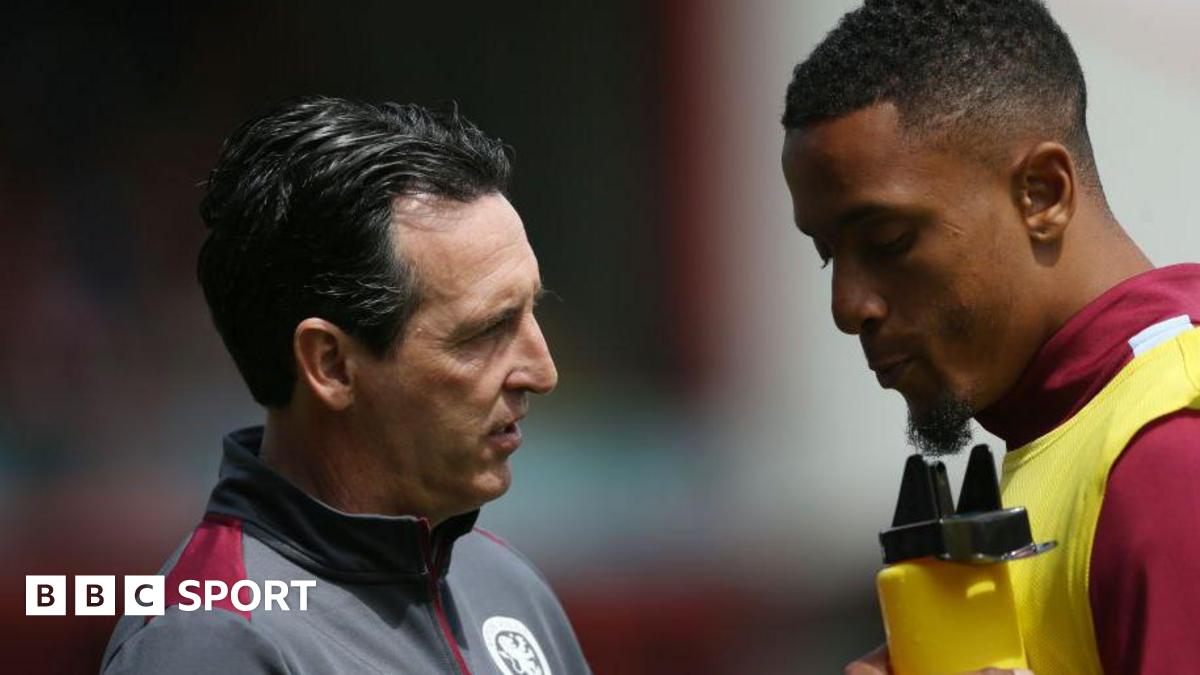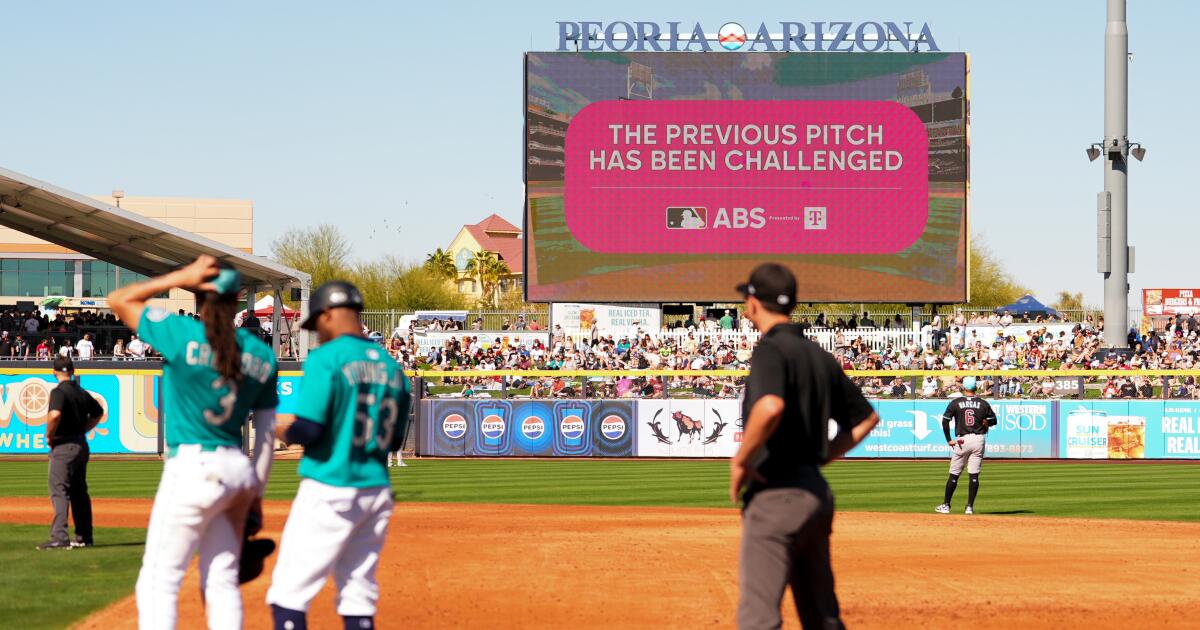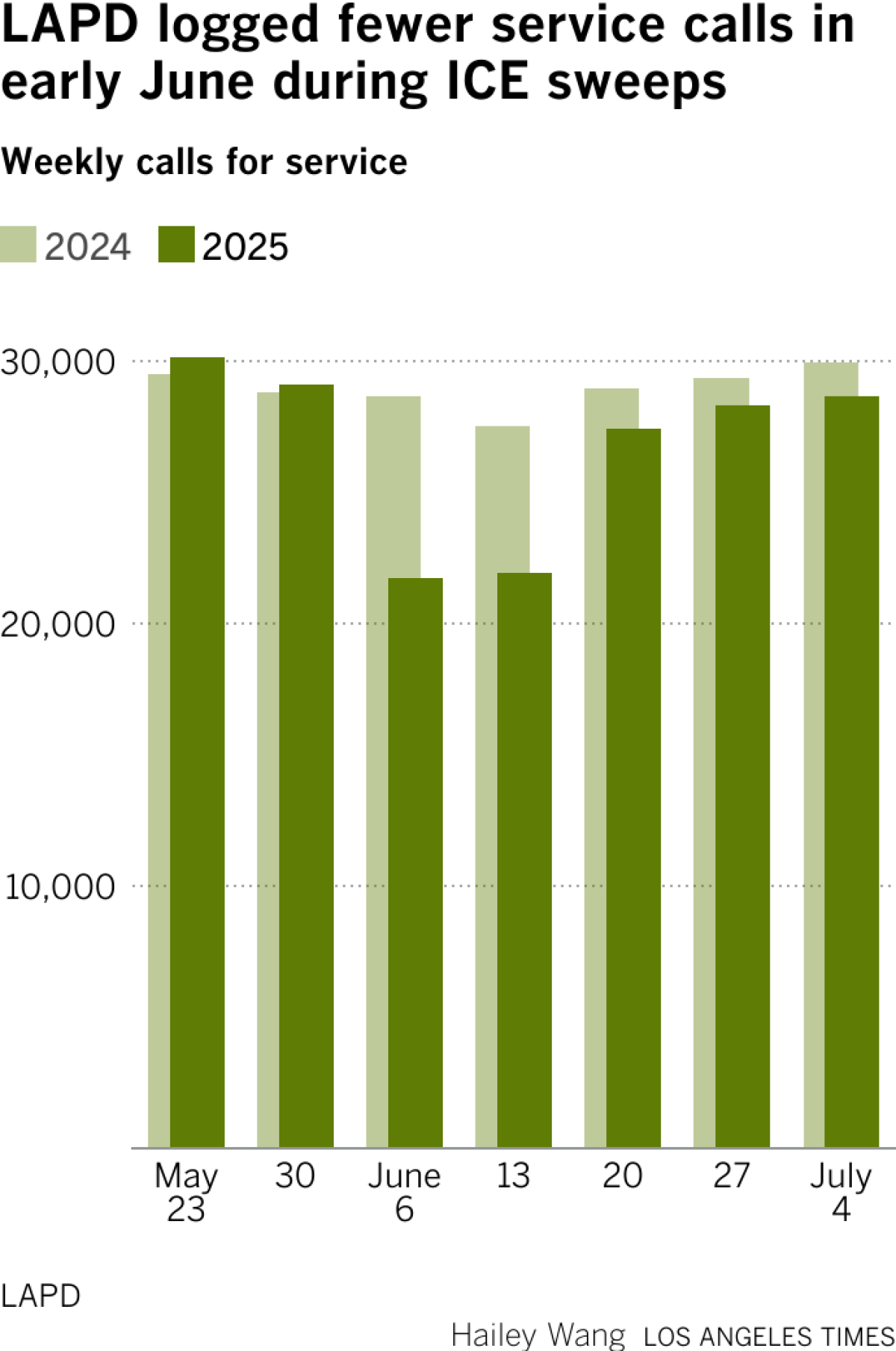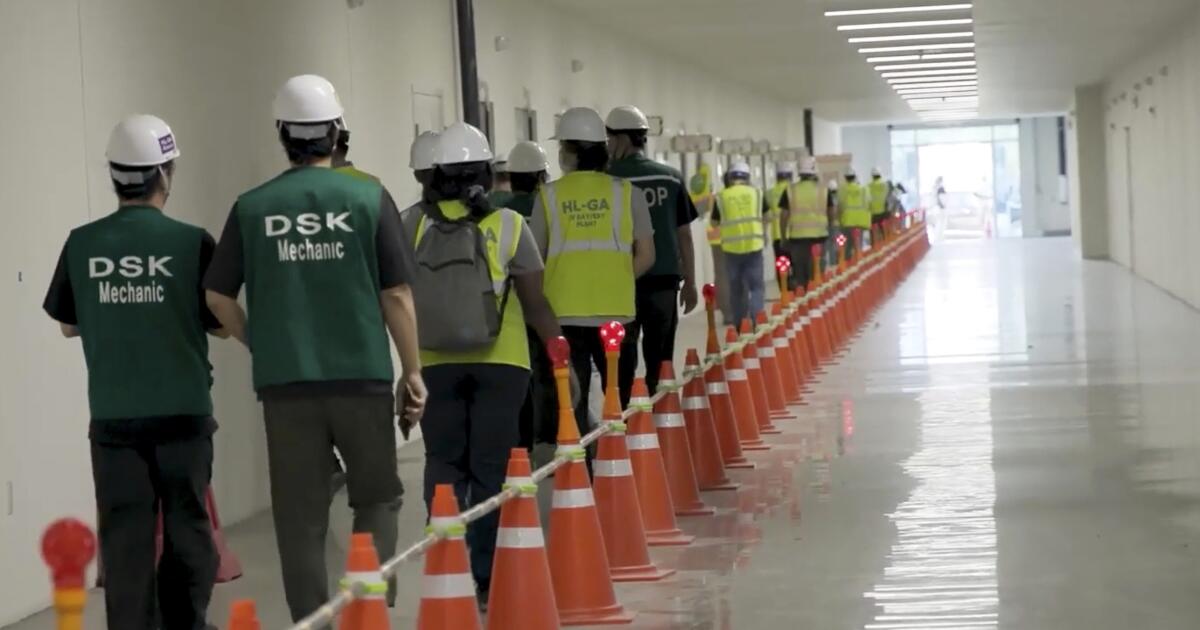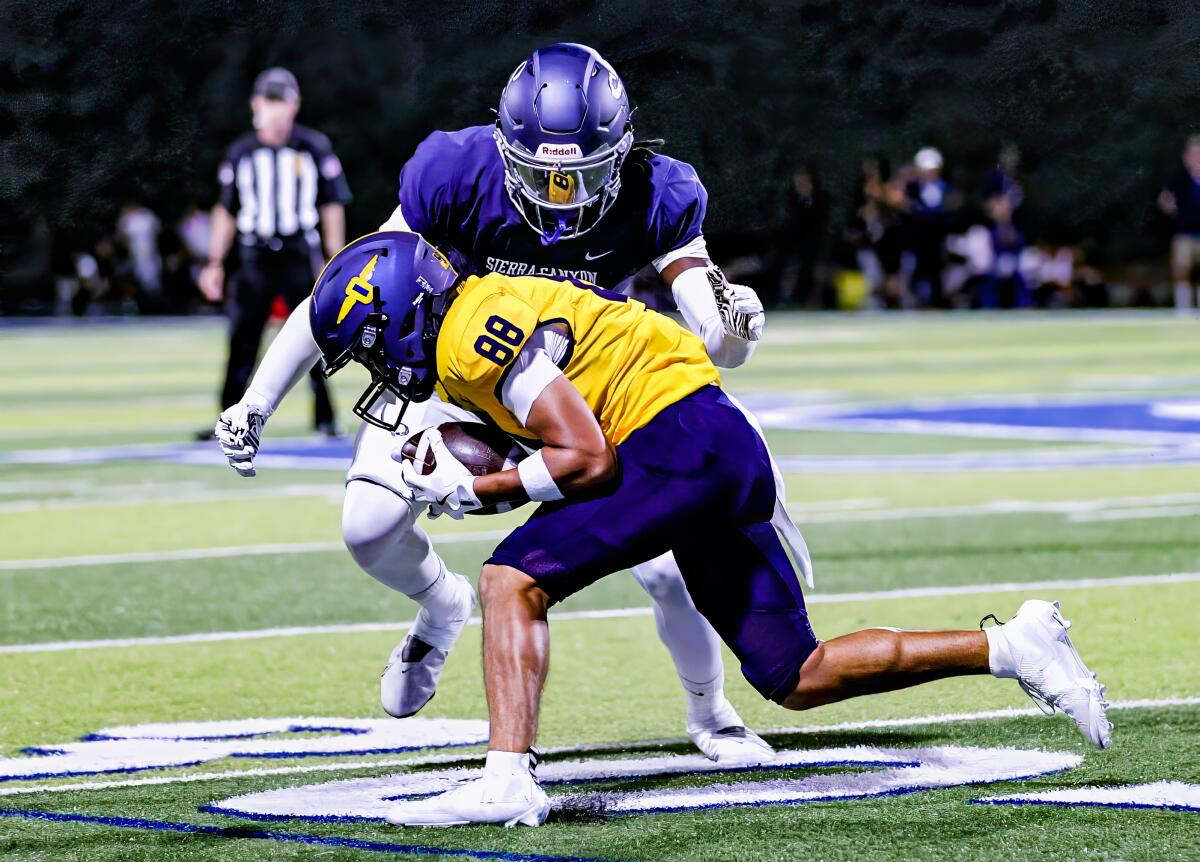
Image source: The Motley Fool.
DATE
Monday, September 29, 2025 at 5 p.m. ET
CALL PARTICIPANTS
Chief Executive Officer — Rob Katz
Chief Financial Officer — Angela Korch
Need a quote from a Motley Fool analyst? Email [email protected]
TAKEAWAYS
Resort reported EBITDA— $844 million for fiscal 2025, representing 2% growth compared to the prior year.
Fiscal 2026 net income guidance— $221 million to $276 million projected for the upcoming year.
Fiscal 2026 resort reported EBITDA guidance— $842 million to $898 million, including $14 million in one-time resource efficiency costs.
Season pass sales trend— As of September 19, 2025, season pass units decreased approximately 3%, while sales dollars increased approximately 1% compared to September 20, 2024.
Resource Efficiency Transformation Plan— Expected to deliver $38 million in incremental efficiencies for fiscal 2026, targeting over $100 million in annualized efficiencies by year-end.
Cash tax payments guidance— Anticipated at $125 million to $135 million for fiscal 2026.
Capital expenditures for calendar 2025— Planned at $198 million to $203 million in core capital, plus $46 million in growth capital for European resorts and $5 million in real estate projects.
Share repurchases— 1,290,000 shares repurchased (3% of outstanding) at an average price of $156 per share, totaling $200 million.
Quarterly dividend declaration— $2.22 per share dividend payable October 27, 2025, to holders as of October 9, 2025.
Net leverage— Net debt was 3.2x trailing twelve-month total reported EBITDA as of July 31, 2025.
Epic Friend Tickets initiative— New benefit for 2025-2026 Epic Pass holders offers lift tickets at a 50% discount to walk-up prices for the 2025-2026 season; full ticket value can be applied toward a future pass purchase.
Lift ticket revenue outlook— CFO Korch said, “still expect to be slightly positive on lift ticket revenue” despite lower pass visitation.
Liquidity position— Company reported approximately $1.4 billion in total liquidity (cash, revolver, and delayed draw term loan availability) as of July 31, 2025.
Transformative marketing focus— Management stated a shift is underway from email-based to broader digital, social, and influencer engagement aimed at brand building and guest acquisition.
Australia operations— Improved visitation and normalization of weather in Australia are expected to contribute $9 million to resort reported EBITDA growth.
SUMMARY
Vail Resorts(MTN 0.41%) management acknowledged financial underperformance versus expectations, attributing this to changing consumer behaviors and lagging adaptation in guest engagement approaches. The company expects overall skier visitation to be slightly down, driven primarily by an anticipated decline in pass sale units, with incremental lift ticket sales expected to offset only a portion of the decrease. Fiscal 2026 growth initiatives focus on targeted lift ticket strategies, enhanced digital marketing, and increased mobile conversion, with a multi-year timeline projected for material revenue acceleration. Net debt levels and liquidity are described as sufficient to sustain current capital priorities.
CEO Katz explicitly confirmed that visitation is expected “to be down slightly” due to lower pass sales, with a partial offset from new lift ticket initiatives.
Passholder renewals are up among multi-year loyal customers, while first-year and new buyer retention remains a challenge.
CFO Korch indicated that visitation is really the key on both ends when assessing the guidance range, highlighting the outsized impact of traffic on results.
Ancillary revenue capture and improved technology deployment (notably, launches for My Epic app integrations) are planned to boost per-guest monetization and operational efficiency.
Management reported no material geographic or demographic concentration in the weak pass trends, describing softness as broad-based rather than isolated to any segment.
Dividend maintenance is prioritized even at the lower end of guidance, with willingness to allow leverage to go up a little bit if necessary, per CEO Katz.
INDUSTRY GLOSSARY
Epic Friend Tickets: Discounted lift tickets made available to Epic Pass holders for their friends and family, priced at 50% off standard walk-up lift ticket rates, and applicable for future pass conversion.
Resource Efficiency Transformation Plan: Vail Resorts’ cost optimization initiative aimed at achieving over $100 million in annualized cost savings, centering on operational and marketing efficiency.
Full Conference Call Transcript
Angela Korch: Thank you, operator. Good afternoon, and welcome to our fiscal 2025 fourth quarter earnings conference call. Joining me on the call today is Rob Katz, our Chief Executive Officer. Before we begin, let me remind you that some information provided during this call includes forward-looking statements that are based on certain assumptions and are subject to a number of risks and uncertainties as described in our SEC filings. Actual future results may vary materially. Forward-looking statements in our press release issued this afternoon along with our remarks on this call, are made as of today, 09/29/2025. And we undertake no duty to update them as actual events unfold. Today’s remarks also include certain non-GAAP financial measures.
Reconciliations of these measures are provided in the tables included with our press release, which along with our annual report on Form 10-Ks, filed this afternoon with the SEC, are also available on the Investor Relations section of our website www.vailresorts.com. I would now like to turn the call over to Rob for some opening remarks.
Rob Katz: Thank you, Angela. Good afternoon, everyone. Thanks for joining us. Before we discuss our results and fiscal 2026 guidance, I want to share my perspective on where the business stands today and where I see opportunities for future growth after being back in the CEO role for the past four months. I want to start by acknowledging that results from the past season were below expectations, and our season-to-date pass sales growth has been limited. We recognize that we are not yet delivering on the full growth potential that we expect from this business, in particular on revenue growth, in both this past season and in our projected guidance for next year.
That said, I’m confident that we are well-positioned to return to higher growth in fiscal year 2027 and beyond. At the heart of our underperformance is that the way we are connecting with guests has not kept pace with the rapidly evolving consumer landscape. We have not fully capitalized on our competitive advantages nor have we adapted our execution to meet shifting dynamics. For years, email was our most effective channel for reaching and converting guests, leveraging data to deliver efficient and targeted communications. However, as consumer preferences have changed, particularly over the last few years, email effectiveness has significantly declined but we did not make enough progress in shifting to new and emerging marketing channels.
Compounding this, we historically have prioritized transactional call-to-action messaging with our guests and missed the opportunity to tap into the strong emotional connection our guests have with the Epic brand and our individual resorts. This approach was successful during a time period where we were rapidly adding resorts and innovating our pass product portfolio. But over the last few years, we have not benefited from those types of positive news events, and instead have dealt with actually some moments we did not deliver on the operational front. Our approach has not been reaching a broader array of guests in order to amplify brand awareness, attract new guests, and increase guest loyalty.
We’ve also not had enough focus on our lift ticket business. Again, this made sense as we were rapidly growing our pass business, but as we dramatically increased pass penetration, we have not pivoted to bring the same level of focus, creativity, and resources to engaging with guests who, for whatever reason, were not yet ready to purchase a pass before the season. Finally, while we have made great strides in developing and improving our My Epic app, the app does not have native commerce, and we have not been set up to accept either Google Pay or Apple Pay.
However, we are seeing guest engagement dramatically increase in the app and on mobile, yet purchase conversion within both are significantly lower than what we would see on our website and below its potential. I’m fully committed to course-correcting and executing a multiyear strategy that unlocks the full potential of our business. The strategy is rooted in leveraging our strong competitive advantages to drive sustained and profitable growth. We own and operate 42 resorts across almost all regions in North America and Australia, and we have the strongest brands and most popular resorts.
By owning and operating our resorts, we are able to collect extensive data from our guests across all our lines of business throughout the entire network, giving us tools we can leverage in every marketing channel, and use to inform mountain and technology investments in the highest return areas across all our resorts. We can also leverage our integrated model and data to optimize every aspect of our product and pricing approach across all lift access products, passes, and lift tickets, at each resort as well as ancillary revenue, which will continue to be a larger focus for the company going forward. Finally, we are well-positioned to leverage the new technologies that are defining the current market environment.
However, our immediate priority is increasing visitation to our resorts, an essential driver of revenue and ultimately free cash flow. We will continue to invest in our resorts and our employees, consistent with our long-standing focus on delivering exceptional guest experiences. At the same time, we are taking decisive steps that we believe rebuild lift ticket visitation, evolve our guest engagement approach, to better reach and convert guests, and reaccelerate growth of our pass program. All of which are critical to strengthening our long-term financial performance. On the first item, we are focused on rebuilding lift ticket visitation, an essential driver of revenue and long-term growth.
We are strategically enhancing lift ticket offerings, pricing strategies, and our marketing approach aimed at bringing in new guests to our resorts in ways that complement our pass program. In August, we introduced Epic Friend Tickets, a new benefit for the 2025-2026 Epic Pass holders giving them the ability to share discounted lift tickets with family and friends. This not only celebrates the social side of skiing and riding, but it also drives lift ticket sales for new guests that would be attracted to visiting our resorts with their friends and family. Importantly, the full value of the ticket can be applied towards a future pass purchase, making it a powerful tool for future pass conversion.
At the same time, we’re evolving our lift ticket pricing strategy with more targeted adjustments by resort and by time period. This allows us to balance guest access and value while optimizing demand, particularly in off-peak periods, without compromising the strength of our pass program. We are also increasing our media investment with a focus on top-of-funnel awareness of our resorts, to help us reach new audiences and drive incremental visitation throughout the winter. And intend to continue to innovate our lift ticket product offering as we get into the upcoming ski season.
Beyond the expected immediate impact on visitation, lift ticket guests represent a high conversion population for future pass sales, which supports our pass growth in FY ’27 and beyond. Second, we’re evolving our guest engagement strategy to better connect with skiers and riders and drive stronger performance. Our focus is on broadening our reach and modernizing how we engage across channels. We plan to increase our exposure within digital and social platforms and expand our influencer partnerships. We believe this shift will allow us to reach guests where they are, and to fully utilize our guest data to create content that resonates with our guests and drives action.
We’re also aiming to elevate the individual brands of our resorts, by tapping into the emotional connection guests have with each destination. We believe this is an important differentiator in a competitive landscape. Third, we continue to see meaningful opportunities to expand advanced commitment and grow our pass business. Pass price reset ahead of the 2021-2022 season exceeded our expectations in the initial years. And despite some modest declines recently, pass units are expected to be up over 50% fiscal 2026 compared to fiscal 2021. And the same is true for our Epic and Epic Local pass products, which despite recent modest declines, we expect to be up approximately 20% in units, since the 2021 season.
And importantly, we have delivered this strong growth in those products despite significantly expanding other pass options for guests, including our Epic Day Pass products. This growth in our pass program has significantly strengthened our financial resilience and stability. We’re focused on driving long-term guest loyalty, which means ensuring we’re optimizing the pass offering and continue to drive retention and conversion of new guests to the program. Toward that end, while driving lift ticket sales, Epic Friend Tickets is also a new benefit for unlimited pass. We’re also investing in personalized media and influencer channels better target and convert prospective pass buyers.
Because passes were already on sale during the CEO transition, our ability to influence fiscal 2026 pass results was limited. Looking ahead to fiscal 2027, we will be evaluating all aspects of our pass portfolio, including the product offering, pricing, and benefits, in conjunction with our lift ticket products and pricing, with a focus on driving conversion to our highest value highest frequency products, and optimizing our overall lift access revenue growth.
We are also actively searching for a new leader of our marketing organization, and have retitled the role as a Chief Revenue Officer reflecting the clear focus for this leader on driving all aspects of revenue for the company, and are looking for an executive with strong P&L ownership and overall leadership experience. Finally, we will continue to invest in our people and our resorts to ensure we are delivering an experience of a lifetime.
We are uniquely positioned to capitalize on investments in new technologies and processes that make it easier for our guests to engage with each aspect of the physical and digital experience we provide, driving both more value for our guests and revenue opportunities for the company. Vail Resorts, Inc. has delivered incredible stability and has an extraordinary foundation to execute on these opportunities, and generate stronger long-term sustainable growth. We have irreplaceable resorts, an owned and operated business model and robust data infrastructure that enables a sophisticated approach to product and pricing decisions across our resorts.
We continue to execute against our growth strategies of growing the subscription model, unlocking ancillary, transforming resource efficiency, differentiating the guest experience, and expanding the resort network. In addition, we have a resilient business model with demonstrated financial stability and strong free cash flow generation. And a track record of disciplined capital allocation and consistent innovation. Coupled with our passionate and talented teams, we believe we are well-positioned to succeed in the future. These actions taken together with the continued success of our Resource Efficiency Transformation Plan gives me confidence in our ability to deliver long-term sustainable growth and long-term value for our shareholders, our guests, our communities, and our employees in the years ahead.
With that, I will turn it over to Angela to further discuss our financial results and fiscal 2026 outlook.
Angela Korch: Thank you. As Rob mentioned, while our financial results in fiscal 2025 do not reflect the full potential of the company, the results do highlight the stability of the business model and early success of the resource efficiency transformation plan. The company generated $844 million of resort reported EBITDA in fiscal 2025, which represents 2% growth compared to the prior year, despite total 3% across our North American resorts. The results were within the original guidance range for fiscal 2025 per resort reported EBITDA, provided in September 2024, and excluding the CEO transition costs and changes in foreign exchange rates, the result was within 1% of the midpoint of the original resort reported EBITDA guidance range.
Results for our fourth quarter fiscal quarter 2025 were slightly ahead of our expectations with strong cost management, solid demand for our North American summer operations, and improved visitation in Australia relative to the prior year. Now turning to our outlook for fiscal 2026. In fiscal year 2026, we expect net income attributable to Vail Resorts, Inc. to be between $221 million and $276 million and resort reported EBITDA to be between $842 million and $898 million. The guidance includes an estimated $14 million in one-time costs related to the Resource Efficiency Transformation Plan.
We anticipate growth in fiscal 2026 to be driven by price increases, ancillary capture, incremental efficiencies related to the resource efficiency transformation plan, and normalized weather conditions in Australia in 2026, partially offset by lower pass unit sales which are expected to have a negative impact on skier visits relative to the prior year, and cost inflation. Season pass sales through 09/19/2025 for the upcoming North American ski season decreased approximately 3% in units, and increased approximately 1% in sales dollars, as compared to the prior year period 09/20/2024.
The season-to-date trends through 09/19/2025 were generally consistent with the spring selling period, a decline in units driven by less tenured renewing guests, those that had a pass for just one year, and fewer new pass holders. Renewals are up for our more loyal pass holders, those that have had a pass for more than one year. As we enter the final period for season pass sales, we expect our December 2025 season-to-date growth rates to be relatively consistent with our September 2025 season-to-date growth rates. The Resource Efficiency Transformation Plan continues to generate strong results for the company, and we expect to exceed the $100 million in annualized cost efficiencies by the end of fiscal year 2026.
Our fiscal 2026 guidance assumes we will deliver $38 million incremental efficiencies before one-time costs, contributing to the achievement of an expected $75 million of cumulative efficiencies since we announced the plan in September 2024. Finally, in fiscal 2026, we anticipate cash tax payments to be between $125 million to $135 million. As Rob noted, while our guidance for fiscal 2026 reflects growth over the prior year, it does not reflect the full potential of the company. We are committed to positioning the company to unlock stronger and sustainable long-term growth moving forward. Turning to our capital allocation priorities.
Operator: We remain committed to a disciplined and balanced approach
Angela Korch: as stewards of our shareholders’ capital. Our capital allocation priorities remain consistent. First, prioritize investments and enhance our guest and employee experience. Generate strong returns. And second, maintain flexibility to pursue strategic acquisition opportunities. After those top priorities, we return excess capital to shareholders. In support of reinvestment in our resorts, in calendar year 2025, we expect to spend approximately $198 million to $203 million in core capital, before $46 million of growth capital investments at our European resorts, and $5 million of real estate-related capital projects. In addition to this year’s significant investments, we are pleased to announce some select projects from our calendar year 2026 capital plan.
A full capital investment announced planned for December 2025, including a core capital plan consistent with the company’s long-term capital guidance. At Park City, we are continuing the multiyear transformation of the Canyon Village to support a world-class luxury-based village experience. Vail Resorts, Inc. in partnership with the Canyons Village Management Association is replacing the open-air cabriolet transport lift with a modern 10-passenger gondola which will improve the guest experience, reduce weather-related disruptions, and complement the Canyons Village parking garage, a new covered parking structure with over 1,800 spaces being developed by the developer of the Canyons Village. In addition, we plan to resubmit for permits to replace the Eagle and Silverload lifts at Park City Mountain.
To continue our investment in the on-mountain experience, which if approved, would be upgraded for the 2027-2028 North ski season. Planning of additional investments at Park City Mountain across the mountain is underway and additional projects will be announced in the future. The company also remains committed to the multiyear transformation of Vail Mountain. And in calendar year 2026, we will continue to invest in real estate planning to develop the West Lions Head area into the fourth base village in partnership with the town of Vail and developer, East West Partners.
In addition, the company plans to build on the success of its calendar year 2025 lodging investment at the Arabelle at Vail Square with plans to renovate guest rooms at the Lodge at Vail in calendar year 2026. In addition, to further enhance the guest experience across our resorts, the company will be investing in technology enhancements and new functionality for the My Epic app including new in-app commerce functionality, payment platform integrations, to improve mobile conversion, enhanced My Epic assistant functionality, and expansion of the new ski and ride school technology experience. In addition, the company will make technology investments to enhance the integration of My Epic Gear guest experience. Turning to the second priority.
Our balance sheet remains strong and is positioned to enable future strategic acquisition opportunities. As of 07/31/2025, the company’s total liquidity, as measured by total cash plus revolver availability and delayed draw term loan availability was approximately $1.4 billion. The company’s net debt was 3.2 times its trailing twelve-month total reported EBITDA. On 07/02/2025, the company completed its offering of $500 million aggregate principal amount of five and five-eighths percent notes, due in 2030. We used a portion of the proceeds from the offering to repay seasonal borrowings under our revolving credit facility, in addition to the $200 million of share repurchases completed during the quarter.
We intend to use the excess proceeds from the bond issuance together with the $275 million delayed draw term loan for the repurchase or repayment of our outstanding 0% convertible senior notes due 2026 at or prior to their maturity on 01/01/2026. After these priorities, we focus on returning excess capital to shareholders. In the current environment, we look to balance our approach between share repurchases and dividends. The company declared a quarterly cash dividend on Vail Resorts, Inc. common stock, a $2.22 per share dividend will be payable on 10/27/2025 to shareholders of record as of 10/09/2025.
The current dividend level reflects the strong cash flow generation of the business, with any future growth in the dividend dependent on material increases in future cash flow. We also maintain an opportunistic approach to share repurchases based on the value of the shares. As mentioned in the quarter, we repurchased approximately 1,290,000 shares or 3% of outstanding shares at an average price of approximately $156 per share for a total of $200 million. We continue to evaluate the highest return opportunities for capital allocation. Now I’d like to turn the call over to Rob.
Rob Katz: Thanks, Angela. In closing, we greatly appreciate the loyalty of our guests this past season and the continued loyalty of our pass holders who have already committed to next season. With our Australia winter season coming to a close, I would like to thank our frontline team members for their passion and dedication to delivering an incredible experience to our guests. I would also like to thank all of our team members who are working to welcome skiers and riders back to the mountain this coming winter season. We are looking forward to a great upcoming winter season in the US, Canada, and Switzerland. At this time, Angela and I would be happy to answer your questions.
Operator, we are now ready for questions.
Operator: At this time, if you wish to ask a question, please press 1 on your telephone keypad. You may remove yourself from the queue by pressing 2. Again, please limit yourself to one question and one follow-up. We’ll take our first question from Shaun Kelley with Bank of America. Your line is open.
Shaun Kelley: Good afternoon, everyone. Thanks for taking my questions. Rob or Angela, maybe I just wanted to start with kind of the broad backdrop for visitation for this upcoming season. So Rob, in the prepared remarks, you talked a lot about some very, I think, interesting initiatives to start to address the visitation challenges and some you see there. Obviously, the Epic Friend Tickets being a piece there, and I imagine you expect utilization on those to be pretty good.
So can you help us just kind of think about that underlying backdrop and what you’re doing on marketing and, you know, with Epic Friends and contrast that with kind of in the, you know, in the bridge for the year on the financial side, it seemed like the implication was that the expectation given the pass units are down a little bit was that maybe visits are down, but I might be misreading that. So just wondering kind of how you expect really this season to play out from a visitation standpoint given some of the initiatives in play? Thanks.
Rob Katz: Yeah. Thanks, Shaun. Yes. That’s true. We do expect visitation in total for this year to be down slightly. I think that is primarily driven by the decline in pass sales to this point. And while we do think that we’re gonna make a portion of that up with lift ticket sales, you know, it’s not gonna be enough to overcome, in our view, the decline in pass sales to this point. What I would say is that a lot of the things that I mentioned about what we need to do to correct how we engage with guests are things that are multiyear efforts. None of those things are things that happen right away.
Even the Epic Friend piece will take time for our guests to understand what they have for us to communicate with our guests, for them to then increase their utilization to understand the change in terms for that and how they can use it and how they could turn it into a ticket the following year. So we expect to see some benefit from it this year, but, obviously, additional benefit from it in future years. The same is true with our paid media investments. Again, I think, you know, if you’re looking for top-of-funnel brand building efforts, that’s not something that’s gonna happen in a month or two. That’s something that takes more time.
The same is true for getting deeper and more skilled and more sophisticated in all the other marketing channels that we have. So what I would say is I think, you know, in the end of the day, we are starting to prepare for the fiscal 2027 season now. So we have work going on. We’re obviously working on pass sales, but also working on other initiatives. If you kind of back that up, you realize, like, yeah, from the time that some of this started, right, not possible to have a full impact on fiscal 2026.
Shaun Kelley: Got it. Makes complete sense. And then just as my follow-up, and you kind of already touched on a little bit of it. Just for the 2027 and beyond plan, some of the outline for maybe the Chief Revenue Officer and some of the opportunity. But just how big of a change is on the table here, Rob, just in terms of like look, the big initiative done was, you know, to push for volume, to push pass utilization up at the expense a little bit of price. Right? That was sort of the compromise made back during the pandemic.
Is something as fundamental as that shift on the table here as we think about moving forward, whether it be raising the pass price in its entirety to balance out that ecosystem differently or maybe thinking about it differently, just the, you know, possibly charging an add-on, which has been proposed at, you know, a major, you know, kind of high-value resort like, like, Vail, like, just to change the composition of, you know, price versus volume. Just how are you thinking about sort of that very fundamental idea as we turn the page to next year?
Rob Katz: Yeah. I think the way to think about it is I think what we did with the price reset was really kind of a right across the board approach because what we saw was that we felt like all of our pricing was too high in terms of getting the penetration that we wanted in pass. And I think that was the right move at the time, and I think it’s driven actually good success. And, obviously, as we highlighted, you know, we’re still well above where we were before then. But what I would say though is I think what we have not done is we have a lot of different pass products. Right?
So it’s not just the Epic and Epic Local. Right? We have a lot of different pass products for that. We then have child pricing and college pricing and team pricing and regional passes. And then all of those products really sit on top of all of our lift ticket products. And I think what you’re hearing from us is I think what we can do is now, right? Not take a kind of across the board approach to any of this, but actually, resort by resort or pass product by pass product approach.
And there’s technology now that’s available that given our data and what we can put into it, right, where all of a sudden we have a much higher level of confidence in terms of what we can drive with some of these individual moves. It’s, you know, I we have, I don’t know, 200 plus pass products or something like that. We have thousands of lift ticket products. And those have largely been marching in lockstep. We think, actually, there’s an opportunity for us to think much more strategically about it. Again, using, you know, some of the tools that are out there that we all know about.
And so what I’d say is, you know, in a way, the big if we’re cracking something open, it’s not necessarily that we’re looking to take price up or price down per se. It’s that we’re actually cracking this kind of connection that every single product has had to each other over the last fifteen years.
Shaun Kelley: Perfect. Thank you very much.
Operator: We’ll move next to David Katz with Jefferies. Your line is open.
David Katz: With respect to the sort of single-day visitation or the walk-up,
Rob Katz: know, window, one of the debates you know, I’m I’m guess you’re you’re having is on sort of that price. Right? And know, whether any of the strategies around improving walk-up visitation you know, includes adjusting some of the price schedules that are out there or some of the pricing strategies.
Rob Katz: Yeah. What I would say is that I think we look at it, I mean, maybe a little bit more broadly. So right at a at a top-line level, we’re looking at pass. Right? So that’s all the products that are sold before the season begins that are nonrefundable. And then there’s lift tickets, and within lift tickets, we have a lot of different lift tickets, some of which most of which, candidly, are advanced lift tickets. So there’s something that you buy three days in advance, seven days in advance. And so we do put a lot of business through that. And then, yes, we do have people who walk up to buy tickets just that day.
And so we are looking at all of those prices. But, of course, I would say, yeah, we’re we’re still gonna be putting, you know, the Epic Friend Ticket is a 50% discount on the walk-up price. That would, you know, perfectly fit for somebody who wants to make a decision that day. But we think there could be opportunities for us to be more creative about some of the other prices that we have and the kind of advanced windows that we have for them because of when people if you haven’t made your decision by the pass deadline, then it’s a question of when do people start making decisions, you know, for their future trips.
So in the end, some of this is like, we’re trying to kind of tailor this to how people make a decision. You know, it’s not that many people are deciding to go to Vail that day and then, you know, come flying out. So the question is, like, when can we shift price that makes the biggest impact on driving more visitation? I understood. And, you know, interesting about
David Katz: the discussion around you know, media channels, And Yep. Historically, the company has always been particularly advanced at you know, data gathering. How much of this strategy about sort of reaching customers through the right channels
Rob Katz: is also about data gathering that builds intelligence know, for the future? Or is it just the right connection channel?
Rob Katz: Yeah. I think I actually feel really good about the data that we have on our guests. We have extensive data. I think, though, that our you know, we’ve had kind of a maybe not a singular focus, but close to around email because it was obviously we could present the information, the offer, the communication to the guests, in a great way. We could, you know, get in front of them and you know, we made a huge effort, right, to collect emails over the last ten to fifteen years.
And if that channel is still gonna be important for us, but we can use that data now with all the tools that are available to go out and use tons of different, you know, paid media networks, that do personalize. Right? And we can go through other companies that we can kind of bump our list against their list and then make sure we’re delivering the right ad to the right person. Then we can use look-alike modeling right, to even for prospects who we don’t necessarily have in our database. To make sure that we’re targeting the right people. And this is true not only with digital traditional digital media, but TV. Right?
Tons of TV now is are things that you where you can run ads that go down to the individual person. Which is important for us because, obviously, you know, we’re not a mass-marketed type item. And by the way, that’s what then, you know, that’s media. Then you add social media. You use have influencers, boosting influencers, you know, own posts about, you know, your product, and then using that creative to actually just run it you know, in those social media channels at the same time using TikTok. Historically, we have really not been you know, engaged in. And, again, all of these things made total sense.
For a lot of time because obviously we did have a much better, more efficient communication channel. But as things shift, like, we have to be out front of those as well. And take the same level of sophistication and data that we have and just leverage them in different ways.
David Katz: Understood.
David Katz: Thank you very much. Thanks.
Operator: We’ll take our next question from Jeff Stantial with Stifel. Your line is open.
Jeff Stantial: Hey, good afternoon, everyone. Thanks for taking our questions.
Rob Katz: Maybe just starting off on
Jeff Stantial: the initial fiscal 2026 guidance, which is where we’re getting the most questions.
Rob Katz: This afternoon. Angela, you listed out some of the puts and takes that factored in. One that seems to be missing or at least that we didn’t hear was sort of how you’re thinking about lift ticket or window ticket sales this year. So is it your expectation that lift unit sales are down year on year
Rob Katz: again, similar to sort of what we saw this past season and one or two before that. Or is it, like, your expectation that should stabilize on some of these efforts as quickly as fiscal 2026? And then and similarly, just how should we think about sort of the blended price growth or decline just given these changes
Angela Korch: to the to the buddy pass system and the more dynamic pricing strategy, maybe net of typical price taking action that we’ve seen from you historically?
Angela Korch: Yeah. Thanks, Jeff, for the question. Yeah. We did talk about the sun visitation where Rob was commenting on. We do expect some offset to the past visitation to occur on growth on lift ticket visitation. And with our pricing actions, while we’re taking some opportunities to introduce new products like Epic Friends and those, still expect to be slightly positive on lift ticket revenue. I’ll maybe go through some of the other kind of gives and takes that I tried to outline. You know, on the midpoint of the guidance relative to last year, it’s up about $26 million. And we called out, obviously, the resource transformation plan playing a big role in that. It’s up $38 million.
Also, the normalized kind of conditions within Australia being another $9 million. And on top of that, really coming from growth, both the past price growth that we took, but also, you know, our lift ticket prices as part of that as well. And then improved ancillary, those are kind of the positives. Right? And those are being offset by our past unit sales, right, which will have negative impact on visits. And then normal just expense and labor inflation.
Jeff Stantial: That’s great. Thanks for all that extra color, Angela. And then turning over to the Epic Friends you know, changes to the structure there, Rob or Angela. Can you just maybe start off by helping frame for us the materiality of Buddy Pass historically, whether in terms of total units, revenue contribution, just any metrics that you could provide there? And then as we think about sort of the overall return on this on this change, is it your expectation that one-time sort of pricing hit in year one can be recouped by higher volume of lift ticket sales?
Or should we really think about this more as a longer-term investment where the return manifests over time through sort of long-term replenishment of that funnel for new to sport and lapsed skiers and ultimately conversion over to pass sales. Just any extra color there would be great. Thanks.
Rob Katz: Yeah. Sure. So I would say so buddy tickets historically are material part of
Angela Korch: of lift ticket sales. Angela, have we disclosed that before? Yeah. There’s the there’s the
Angela Korch: pie chart in our investor presentation where you can see, right, it’s it’s about 7% of total lift revenue, but right, it is 20% of paid lift ticket. Revenue that comes from those benefit tickets.
Rob Katz: So yeah. So it’s, you know, material, and that gives you kind of a sizing of it. What I would say is I think our view is that
Rob Katz: it is something that we would expect to be
Rob Katz: a positive, right, to the year. We’re not expecting it to be negative to the year.
Rob Katz: Think, obviously, it’s something that’ll grow over time. But we do see that and in large part, it’s because, of course, we’re gonna be giving a discount an additional discount some people who are already using the program. But we’re expecting, right, you know, more people to use the program that we’re gonna promote it in a much more, significant way. Now that the discount is just 50% across the board for everybody, now that we’re giving the discount to pass holders, in the fall, not just pass holders in the spring, And, obviously, have been more clear about the ability to turn it, you know, turn it into the following year for a pass.
So in total, we just feel like, yeah, we will ultimately add more visits, and that is something that is contributing to the lift ticket growth that we’re expecting. For this year as we talked about earlier.
Jeff Stantial: Okay. Thank you very much. Thanks.
Operator: We’ll move next to Stephen Grambling with Morgan Stanley. Your line is open.
Stephen Grambling: Hey, thank you. A couple of follow-ups on the moving parts you ran through in the guidance for the year ahead. Do you generally anticipate that some of the efforts to communicate the new
Stephen Grambling: pricing
Stephen Grambling: and marketing will be incurred
Stephen Grambling: this year, or is that more of a 2027 thing?
Stephen Grambling: So as we think about the potential for recovery and visitation and top line in ’27, will there also be a step up in incremental costs?
Rob Katz: Yeah. I think two things. One is I think we know, there are opportunities actually to offset what you know, as we use more sophisticated technology in our marketing department to actually get more efficient with our overall cost. Which I think is kind of an overall view that we have about the business going forward that we believe that there are continued opportunities for us to drive resource efficiency and marketing is one of those places. And our goal is to take those savings and obviously redeploy them into investments that we think could be more productive.
So while we do see that there’ll be additional investments that we have to make, both within our marketing group and, of course, on the mountain, in our employees, as we, you know, look to take the experience of we also feel like there are other opportunities for us to take cost out of the business. So the investments that we wanna make are not ones that we think should pull down the margin. At all.
Stephen Grambling: That’s helpful. One other follow-up. How are you thinking about the net impacts from the disruption at Park City last year versus this year? Is that a tailwind in your expectations? Or a headwind?
Rob Katz: Yeah. It’s definitely it’s definitely a tail in our mind. Obviously, you know, of course, there could be some guests that didn’t have a good experience and are concerned about returning. But we see, you know, the experience was so challenging last year, and we think the tail from that likely was last season. Where I feel like this year we’re gonna be going in and the team, I think, there has done a great job of preparing for the season. I think we’re in a great spot to deliver a very high level of experience all season long.
I think that’s something that’s, you know, gonna come through and we’re seeing evidence of that, in the broader market bookings as well in Park City. So you know, for us, I think it’s we’re starting off in the right spot, and so we feel like it’s a tailwind.
Stephen Grambling: Great. Thank you.
Operator: We’ll move next to Laurent Vasilescu with BNP Paribas. Your line is open.
Laurent Vasilescu: Good afternoon. Thank you very much for taking my question. The March Investor Day laid out a vision think, on Slide 45 to have past revenues go from 64% of the mix
Laurent Vasilescu: to over 75% over time.
Laurent Vasilescu: Rob, with the comments provided in earlier on the lift tickets, Where do you want that mix rate to go over time? Should it still go over the 75%? Are you happy with that rate at 64 currently?
Rob Katz: I would say, you know, right now, I think my primary focus
Rob Katz: is on overall visitation to the resorts.
Rob Katz: And overall lift revenue. And I think but I would say that I do think you know, there’s yes. There’s some pullback you know, that is maybe to be expected given the kind of rapid growth that we saw know, over the last four years. But I actually feel that, yeah, there’s continued opportunity just like we talked about with Epic Friends tickets and moving people, you know, through lift tickets. Those are all opportunities for us to ultimately convert them into a pass. And so we absolutely are gonna continue to march forward you know, as we get, right, new visits from every source. To convert them and drive our path to the stuff.
It’s ultimately you know, it’s the best deal. It’s the cheapest per day price. And as people get more comfortable, you know, and more willing to commit in advance, we think we could transition them into those products. But, again,
Rob Katz: yeah, it starts with visitation growth, overall visitation growth.
Laurent Vasilescu: Okay. Very helpful. Thank you. And then tonight’s press release outline is that you
Laurent Vasilescu: expect
Laurent Vasilescu: your December 2025 CV date growth rate to be comparable to what you saw for the month of September. Can you maybe comment a bit more about this? What gives you the confidence that the trends remain consistent going forward for the next few months?
Rob Katz: What I would say is every time we put out some color commentary on that, use the trends we’re seeing, how they’re shifting, And it is true that as we go into the last you know, deadlines, it is more heavily weighted to new than renew. So there’s always a little bit more uncertainty. At the same time, obviously, a lot of the selling season is behind you. So we take all of those things, you know, into yeah. An estimate. Right? We use forecasting to come up with what we see going forward.
And it doesn’t mean we’re gonna be precisely accurate time, but we try and give people kind of our best assessment of every piece of data that we have at the moment.
Laurent Vasilescu: Okay. Thank you very much. Best of luck. We’ll move next to Patrick Scholes with Truist Securities.
Operator: Your line is open.
Patrick Scholes: Hi. Thank you. Good afternoon, everyone. I’d like to talk about the dividend coverage. When I run some back of the envelope numbers, and certainly, it could be off in my assumptions here, at the low end of the guide, it looks like the dividend is not fully covered by the free cash flow. Assuming I’m not completely wrong in my calculations, My question is, you know, how comfortable are you taking on some debt assuming you come in at the lower end of the guide? To maintain that dividend and along that line, at what’s net leverage ratios are you comfortable with? Thank you.
Rob Katz: Yeah. We’re very comfortable with the
Rob Katz: current leverage ratios that we have. We think they provide a lot of room for the company
Rob Katz: you know, especially given the stability of the business. So that has given us comfort on our dividend level. And, yeah, we’re we’re certainly comfortable you know, if it means that yeah. Leverage goes up a little bit given the you know, where we’re starting from. That said, I think we’ve been really clear that to show an increase in our current dividend yeah, we need to see a material improvement in free cash flow. But in terms of the current dividend, yeah, we’re we’re comfortable with that.
Patrick Scholes: Oh, okay. So would take on a little bit of leverage if
Patrick Scholes: needed.
Patrick Scholes: If
Patrick Scholes: needed to be in that scenario. Next or my follow-up question here, Curious as to in your past sales, what have been the trends for international guests? I know you’ve got a couple of lot of moving parts there when we say international. You know, kinda depends what country wants to visit us. This moment and what doesn’t. You know, how is that looking say, Mexico versus Europe versus Canadians? You know, what are what are trends you’re seeing? And has sort of the negative rhetoric you know, has that been a an guess, a negative for you? Because you did see some deceleration in pace since your May update. Thank you.
Rob Katz: Yeah. I think what I’d say is the yeah. That certainly no trend there that’s material enough to affect the overall results that we’re talking about. I think we yeah. We’ve not
Rob Katz: seen any specific evidence of a shift per se in
Rob Katz: you know, you know, future international visitation. You know, that, I would say, you know, international visitation has gone down if you look back over the last you know, five, seven, eight years,
Rob Katz: for a whole variety of reasons, some of which was, you know, the dollars, some of which was some of the rhetoric and stuff like that in the past or concerned about visas, this or that.
Rob Katz: But, yeah, at this point, we don’t see that as a yeah, a major issue one way or the other as we go into next
Rob Katz: season. Okay. Thank you.
Patrick Scholes: Thanks. We’ll take our next question from Arpine Kocharyan with UBS.
Operator: Your line is open. Hi. Thank you so much for taking my question. I was wondering if you could give a little bit more color where you’re seeing most weakness in your base and maybe where you’re seeing more sort of a resilient customer and anything else you would highlight on destination versus regional resorts? That you saw in past sales trends? You also talked about, you know, less tenured pass holders maybe not renewing at the same rate. As last year. Anything else you would highlight that you saw in past purchase trends that we should be aware of getting into the season here? And then I have a quick follow-up.
Rob Katz: Yeah. Sure. I think you know, one of the things I would say is that the results that we’re seeing are fairly consistent between
Rob Katz: yeah, a lot of different guest demos geos, half ties, new renew. I mean, yes, we do. We, you know, obviously, have you know, lower renewal rates for one year or less, you know, pass holders. That’s true. But I’d say broadly that maybe the takeaway from the results is this broad-based result in performance which is one of the reasons why, yeah, we pegged sometimes if we’re seeing we have so many different bath products and so many different resorts that yeah, if there’s an issue with one resort or an issue with a region or an issue with a guest group,
Rob Katz: would typically then, you know, see that show up. But when you see it, so broad-based,
Rob Katz: it says one of two things. Either there’s just a broad you know you know, potentially, like, again, you know, we grew the market dramatically. ICON was growing dramatically. You know? And now you’re seeing kind of, like, a maybe a maturation or stability of the overall market. Even if you just look at you know, the NSAA, National Skiery Association data over the last couple of years, it’s the first couple of years in a long time where past visits have actually declined.
Rob Katz: Lift ticket visits have actually increased. That’s where the growth that you saw actually came from.
Rob Katz: And so there’s probably some market maturity, right, because of the rapid growth of the last couple years. And then it’s also why when we talk about our marketing effort, and why we’re not connecting because, obviously, we’re using even though the content is not the same for each guest group, a lot of our marketing approaches are consistent. And why, you know, in my mind, it highlights, right, that’s an opportunity for us as we go forward.
Rob Katz: But, yeah, no. There’s nothing that I can call out specifically about, you know, some group or another. One thing I’ll just add on the consumer piece on renewal
Angela Korch: is we’re not seeing any change in kind of that net migration behavior as well. We’re continuing to see about the same amount of trade up as trade down as we’ve seen over the last few years. So you’re not seeing the renewal base be kind of a people pulling back because of pricing or trading down. We’re not seeing that dynamic within our renewals. Interesting. Thank you. That’s very helpful. Just to go back to the EBITDA bridge, you mostly covered this question earlier. But I was wondering, what needs to happen for you to hit
Operator: the upper end of your guidance range versus midpoint? Obviously talked about more nimble pricing in off-peak, periods, maybe more targeted approach to drive window traffic. It sounds like
Angela Korch: that has the potential to impact lift volume as soon as this season. Is it just a matter of sort of those strategies working for you to hit the upper end of the guidance range?
Operator: Thank you.
Angela Korch: Yeah. I think the range usually, I mean, the biggest driver is always visitation, right, in terms of the range that we put out, because that impacts everything. Right? It impacts all of our ancillary and flows through at a very high rate. So yeah, visitation is really the key for us on both ends of the spectrum of the guidance range.
Operator: Yeah. So what needs to for you to hit the upper end of your visitation guidance?
Rob Katz: I think I mean, I think in the end, there’s obviously opportunity for us to outperform either on pass or on lift ticket visitation. You know, we’ve got
Rob Katz: a number of assumptions that go into how we come up with guidance, and there’s always gonna be a kind of up or down, you know, estimate around each one. And, you know, sometimes things, you know, will work earlier than you think. But, of course, that’s true. You know, sometimes things don’t work as well as you think. So I you know,
Rob Katz: of the reasons why we have a range. It’s it’s, you know, it’s not possible for us to pinpoint exactly. But it’s meant to say that, yeah, that we feel, you know, when we are looking at the totality of the business that this is the most likely range that we’ll wind up in.
Laurent Vasilescu: Thank you.
Patrick Scholes: Thank you.
Operator: We’ll take our next question from Ben Chaiken with Mizuho. Your line is open.
Ben Chaiken: Hey. Thanks for taking my questions. Rob, you mentioned evaluating the past product offering in the release and the Q&A few times. I guess, just taking a different perspective, I guess, where do you see the largest holes with the past? So not asking, like, the strategy necessarily. I think is where the conversation has been. But what are you trying to solve for? Like, where do you think Vail is lacking? To the extent that you do, and where are the largest areas to improve? Thanks.
Rob Katz: Yeah. I think, you know, we’ve got a pretty, broad portfolio. So I it’s not that I feel like you know, we’re missing a particular product but I’m not sure, you know, with that this many products, you know, I’m not sure that we are pricing these products in the optimal way, but either against each other you know, or against kind of the need that we’re looking for each segment. I also think there’s opportunities for us to look at the benefits we provide on our passes. Which, again, largely have not changed that much over the over the years. And, you know, who gets what and why and where and all of that.
I mean, I think and I think what you’re seeing, it’s a little bit like what we said about resource transformation for the company, which is you know, we added a lot of resorts over a relatively short period of time and they’re now taking the opportunity to go back and say, okay. Wait a minute. We can do things a lot smarter than we’ve been doing them when we were just in full acquisition mode. But the same is true for Pat. We’ve added a lot of products. Over a very long period of time and have not really gone back to say, wait a minute.
Like, how do we optimize each one of these price relationships or benefit relationships? So in our minds, that’s you know, it’s it is a product and pricing piece. But it’s not necessarily because we, you know, we see some gaping obvious hole. That we need to fill. I mean, I think if one of the things that we did identify was buddy tickets and ski with a friend tickets and the benefit tickets. And, you know, we that was something that we have identified you know, that it wasn’t simple enough. It wasn’t clear enough. It wasn’t really moving the needle the way we wanted, And so, yes, we certainly addressed that as you saw for this season.
Ben Chaiken: Got it. That’s helpful. And then just one quick follow-up. You’ve mentioned kind of benefits a few times. I guess, what’s your thought process on adding, like, additional member benefits or perks to the past in attempt to increase the year-round utility. I think there’s, you know, a few passes out there provide these other ancillary benefit to pass holders. I mean, it’d be great to get your take on that strategy.
Rob Katz: Yeah. I think I think that’s something that we have absolutely need to look at. I also wanna make sure if we do something that it’s it’s not just like window dressing. That it’s something that really will move the needle. And that, you know, if we’re gonna you know, you know, certainly, if it’s coming from our company and we’re gonna put time and effort and our own energy to it, it’s a third-party benefit, then it has to be, yeah, a partnership that we wanna really get behind. So either one of those, I think, you know, in our mind, it’s know, the primary benefit, obviously, is skiing. And so yeah.
Then once we get beyond that, now it’s you know, when we’ve got our epic mountain rewards, right, which gives people, you know, the 20% discount. On a lot of our ancillary lines of business. So we start going beyond that, like, yes, it needs to be something that should make a difference. But, also, I think we’re in a good moment in time, I think, to start exploring all that.
Ben Chaiken: Thank you.
Laurent Vasilescu: Thanks.
Operator: We’ll move next to Brandt Montour with Barclays. Your line is open.
Brandt Montour: Great. Thanks, everybody. So my first question is on the guidance
Rob Katz: You know, do you guys
Brandt Montour: gave the usual sort of normal weather implied in guide. I just was hoping maybe, Rob, you could
Brandt Montour: put a finer point on that. Is
Brandt Montour: with last year last year seemed like it was really good weather, but was that normal was that better than normal? I know the years prior to that would be would be, firmly worse than normal, but maybe you can just give us a little bit of help with what you what you sort of
Angela Korch: baked in there.
Angela Korch: Yeah. Thanks, Brandt. I would say last year, right, we had a pretty normal ramp across most of our regions where we were able to get terrain open. Kind of on a typical schedule. I actually finished for the year. Right? Q3 actually had kind of a fall off on some of those conditions. But again, that doesn’t usually drive as much of the overall impact as being to get kind of open and train open, you know, ahead of some of those peak seasons. So we didn’t see any unusual disruptions, I would say, like we’ve called out in of the other two years.
So it’s much more of a typical pattern, though I wouldn’t say it was like a Bob average
Angela Korch: snowpack or snowfall year by any means last year.
Brandt Montour: Okay. Great. Thanks for that. And then on the lift ticket strategy and the discussion around that, I think it was know, I think the pitch was pretty clear. You know, the message from you guys today that the optimization opportunity exists. You know, when you think of plan, absorbing this from you guys, you know, you guys, and wanna say it sounds like, you know, discounting or anything like that, but just smarter marketing, smarter pricing.
Brandt Montour: Is there a risk that as you, you know, improve the
Brandt Montour: attractiveness of the lift ticket, You could cannibalize early commitment. I know that would be a little bit on a on a delay because, you know, you’re you’re
Brandt Montour: know, your marketing
Brandt Montour: day tickets after the past selling season. But those same folks are probably gonna overlap
Brandt Montour: know, in terms of who you’re reaching with that marketing. Is that a risk for the following year? Going down that road?
Rob Katz: I mean, I think it’s what I’d say is, yes, it’s a risk in terms of it’s something we pay a lot of attention to. But I think if you look at the differences between window, you know, the walk-up window or advanced lift ticket prices and the price you pay if you buy in advance, If you buy in a pass,
Rob Katz: the season,
Rob Katz: that gap has widened dramatically over the years. In particular when we took pass pricing down four years ago. So I think when you know, there’s in our minds, there’s plenty of room to be more aggressive and creative on lift ticket pricing. Without necessarily sacrificing you know, past business, but it is absolutely something we’re very, you know, cognizant of and pay close attention to.
Brandt Montour: Great. Thanks, everybody.
Laurent Vasilescu: Thanks.
Operator: We’ll take our next question from Chris Woronka with Deutsche Bank. Your line is open.
Chris Woronka: Hey. Good afternoon, Brock. Good afternoon, Angela. So I guess the first question I’m thinking about, Rob, is strategically you know, the idea to kind of go after more volume. You’ve talked about making Ski more accessible to, you know, to a wider range of, people. Is this more about an age number you know, age bucket or certain demographic? I’m I’m I’m trying to kinda square like, what you where those people are going now if they’re not going skiing and know, is price how confident are you? I don’t know if you’ve done survey work or other things around that.
How confident are you that investment in price, so to speak, and other things in the experience is gonna is gonna get those folks to your to your mountains versus what whatever else they’re they’re doing today? Thanks.
Rob Katz: Yeah. Sure. Well, I mean, one is I think, yeah, we need to
Rob Katz: make sure that even within whoever’s going to ski next year, yeah, that we’re getting our fair share representative of the quality of our resorts the quality of how we engage with them, to make sure that we’ve got the right price you know, matrix, right, to optimize our overall lift revenue. And so that I mean, it does start with that. And I would say, I think like this one of the things, know, that’s important to understand about the ski industry is that it’s constantly in flux. So there’s a ton of people every year that go out of this
Rob Katz: industry
Rob Katz: a ton of people every year that come in. Then a ton of people every year that come back or take two years off or three years off. People that take go for two days, the next year could go for four. Right? And so, actually, even within, like, we took the total number of people in let’s just start with The US. That know how to ski, so therefore could take a ski vacation, Yeah. Like, there’s a lot of opportunity to move frequency skier visits within that necessarily kind of convincing somebody who never skis to ski. Right? And so that is really our primary target. And that is a combination. Right? It’s not just price. Right?
Like we’ve gotta get the right message in front of them We’ve gotta make the right emotional connection to them. To their friends or family, to their kids, depending on who it is. And then, yeah, you have to have the right overall mix of value, right, to move some of these folks. Obviously, they are the least committed skier, But, again, it’s not, you know, there’s a huge percentage of the market each year that’s going in and out. So to speak, and a huge percentage that’s moving their frequency. And it’s within all of that, Right? It’s not like we’re selling soap, and everybody’s buying a bar of soap.
And never you know, and now you’re just trying to convince somebody who bought some other brand to buy yours. This is a product that is you know, yeah, that is very much a discretionary vacation choice, and we think there’s real opportunity for us to
Rob Katz: to drive
Rob Katz: overall frequency up. And I would say, you know, when you look at you know I mean and Chris, you know, you go back a long way. I go back a long way. It’s like, yeah, people have been talking about the fact that the ski industry never grows, but two years ago, right, we hit a record. Now people say, oh, well, that’s COVID. But okay. That’s fine maybe, but in the end, right, it was still
Rob Katz: or was it three years ago? I guess that was
Chris Woronka: record. But in the end, right, it shows that there’s enough people in The US to actually do that.
Rob Katz: Right? And so in the end for us, it’s not it’s about getting people out and getting people to the resort and getting more days.
Chris Woronka: Yeah. It makes sense. Thanks for all that Just had a follow-up on CapEx. And the question is kind of you know, almost like what you’re solving for there. I know over time, you guys identify specific projects. There’s a maintenance
Chris Woronka: piece to it. But if I guess, do you think CapEx is there a step function where CapEx
Chris Woronka: you think needs to jump up to try to you know, is that part of your plan to get people back and adding new amenities? Faster, whatever it might be. Or you think, hey. Capital plan is gonna be what it’s gonna be year to year. Constraints based on, you know, where we are in EBITDA, that kind of thing. I’m I’m really just trying to get at whether you think of bigger uptick in CapEx would actually help if it’s necessary or if you plan to do it in the in the near future? Thanks.
Rob Katz: Yeah, I guess I’d say I think after
Rob Katz: we’re always gonna be upgrading Lyft, and we, you know, announce the new Lyft for an year, obviously. And that’s critical. But it can’t I think we need to realize also as a company and as an industry that it can’t just be about Lyft. It’s not the only thing that matters to people. And in our minds, like, one of the things where I think we’re we’re kind of at the beginning of this, and we’ve made some initial forays, but like, we think there’s technology that can make a big difference.
So how people use technology in the digital experience how it makes it easier for them, to rent skis, how it makes it easier for them to connect with their ski instructor. How it makes it easier for them to get food, how it makes it easier for them figure out how to book or get around a resort or you know, overall book a vacation. I think these are all things that are critical that really speak to the entirety of the guest experience when they come to us. And those are things where we really have both a unique advantage. Right? Because, obviously, we own and operate all our resorts. They’re all on a common platform.
And it’s where you invest dollars that actually impact everyone’s experience with all of our resorts. Rather than you know, a singular left. Which affects one resort, for some people who use that lift.
Rob Katz: Now that said,
Rob Katz: have to keep investing in Lyft. When you look back historically, I think you know, you’ve seen us. We have spent a lot of money on Lyft over the last four years. So that’s that’s continuing. We’re still gonna keep proposing Lyft. But I think the differentiator is gonna be in this other area. Where I think it is actually not as capital intensive. Right, as trying to replace every lift on Vail Mountain or something like that. And so it is where we’re putting our focus. At this point, we’re not making any changes to our long-term capital guidance. You know?
But to the extent that we saw opportunities, that made sense to do it, of course, we’d come back to everybody and share that. But at this point, we’re not seeing that.
Brandt Montour: Okay.
Chris Woronka: Very good. Thanks, guys.
Operator: This concludes the Q&A portion of today’s call. I would now like to turn the call back over to Rob Katz for closing remarks.
Rob Katz: Thank you. This concludes our fiscal year-end earnings call. Thanks to everyone who joined us today. Please feel free to contact Angela or me directly should you have any further questions. Thank you for your time this afternoon, and goodbye.
Operator: This concludes today’s Vail Resorts, Inc. fiscal 2025 year-end conference call and webcast. You may now disconnect your line at this time. Have a wonderful day.












